With the Titanic in the news, I’m reminded of another disaster in the North Atlantic. A ship went down, and 136 lost their lives. It was not caused by an iceberg but by a fire. It was front page news in The New York Times for days. It would probably have greater historical prominence, but the sinking of the Titanic a year earlier was an even bigger story.
“At about 06:00 on 9 October 1913, Volturno, on a voyage from Rotterdam to New York carrying mostly immigrants, caught fire in the middle of a gale at 49.12N 34.51W in the North Atlantic. The crew attempted to fight the fire for about two hours, but, realizing the severity of the fire and the limited options for dousing it in the high seas, Captain Francis Inch had his wireless operator send out SOS signals. Eleven ships responded to the calls and headed to Volturno’s reported position, arriving throughout the day and into the next. In the meantime, several of Volturno’s lifeboats with women and children aboard were launched with tragic results; all the boats either capsized or were smashed by the hull of the heaving ship, leaving no one alive from these first boats.”– Source: Wikipedia
One of the survivors was a Russian immigrant listed on the ships’s manifest as Kirilo Krilenki. Кирило Криленки in Russian. At his parents’ urging, he embarked for the United States with his cousin, Konstantin Bohutzky. They were both 17 years old. Kirilo was my grandfather on my mother’s side.
Kirilo was rescued by the SS Seydlitz. About 20 years ago, I found an online forum devoted to the topic of the Volturno and I made email contact with relatives of another survivor. Her name was Surke Tepper, later called Sarah. She too was from Russia and was also picked up the SS Seydlitz. There were 10 or 11 rescue ships, so it was remarkable that I found a descendant of someone on the same rescue ship as my grandfather, two of only 44. Even more remarkable was that in 2003, she was still alive. She was 7 years old at the time of the Volturno disaster. Since my grandfather was 17, they would not have talked but would likely have seen each other. Kirilo Krilenki died October 31, 1974 at 77.
Surke (Sarah) died in Los Angeles, September 22nd, 2006, 16 days after her 100th birthday. Her recollections, as told by Cary Ganell about 1998:
“When I interviewed my great aunt Sarah, her eyes glazed over with excitement as she recalled minute details of the fire. At 91 and with failing eyesight, she remained sharp-minded as she told of the Volturno’s crew hosing down the deck during that awful day on the ship, to keep it cool because the fire was burning just below it. She recalled being lowered to the rescue boat while hanging onto a rope, and almost falling into the water before having her legs grabbed by someone and pulling her safely in. And she remembered her older sister Bella, who would become my grandmother, who was so scared that she wanted to jump into the ocean like their poor friend, only to be restrained by the rest of the family.”
My grandfather married an immigrant, Maria Pikula from Suchá Hora, Austria-Hungary. Today it is within the borders of Czechoslovakia. They had four children. Their firstborn was a son. Karol died the day he was born. Then John was born. He served in WWII notably at the Battle of The Bulge. His life was tragically impaired by “shell shock”. Today we call it Post Traumatic Stress Disorder or PTSD. John never fully recovered and never married. Anna, my mother, was the third born. The youngest, Carl, is alive today at 89 years old. My grandfather adjusted to life in the United States and found a job working at Fisher Body, an automobile coachbuilder. General Motors vehicles displayed a "Body by Fisher" emblem on their door sill plates until the mid-1990s. Kirilo’s cousin Konstantin died young. My aunt said he died because of a serious illness, my mother said she heard he died by suicide.
The tragedy of the SS Volturno, while significant and instrumental in its own right, did not capture the public's imagination in the same way as the Titanic, partially because the Titanic was a luxury liner carrying many high-profile passengers, whereas the Volturno was largely an immigrant ship. Nonetheless, the Volturno disaster was a critical moment for the improvement of ship safety standards, particularly regarding the use of wireless technology for emergency communication and coordination of rescue efforts at sea.
With the coordinates in the 1913 NY Times article, I marked the Volturno’s location at the time of the fire using Google Earth.
Front page of the New York Times



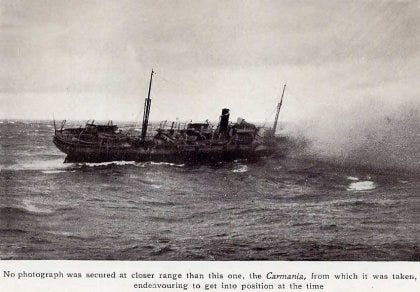
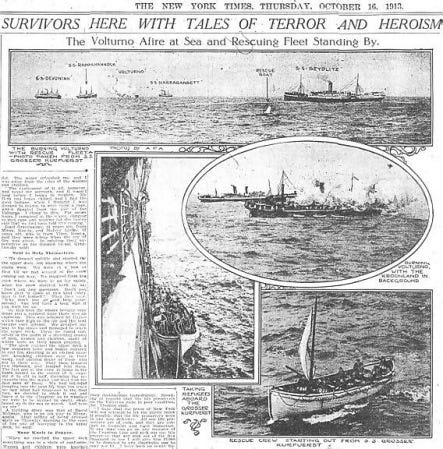
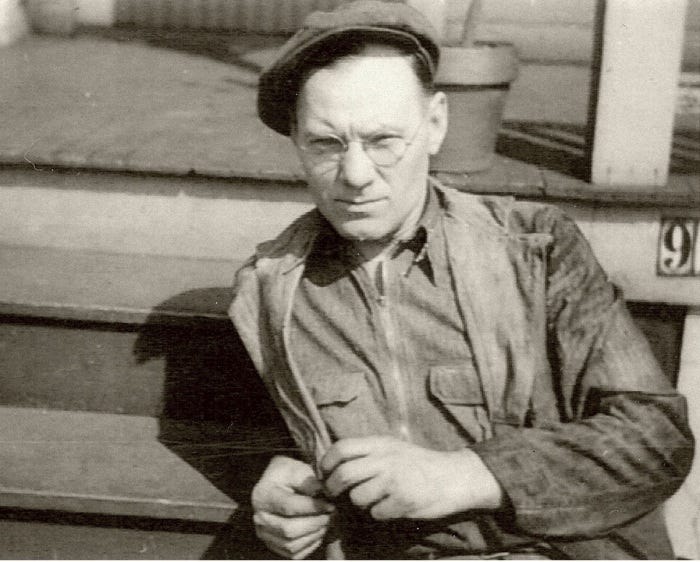
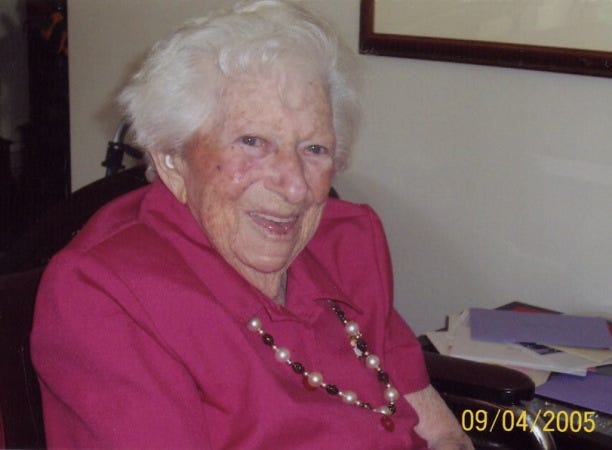
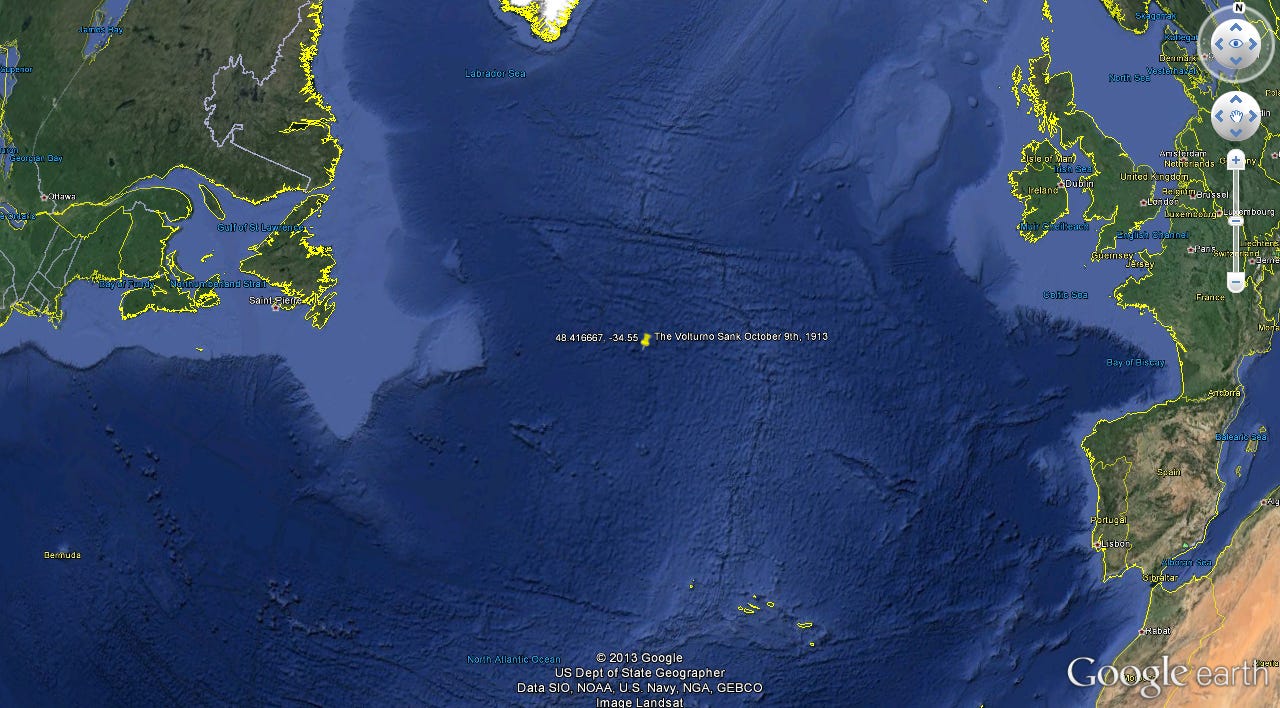
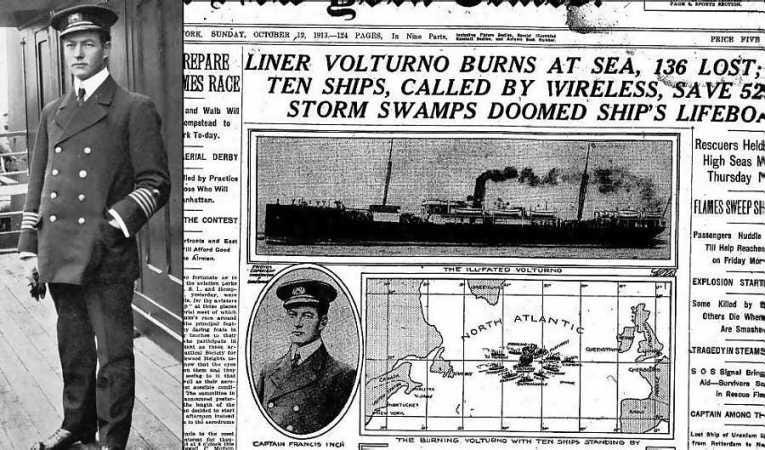
I’d never heard of this shipwreck. Fascinating tale with your family history interwoven.
Amazing story!